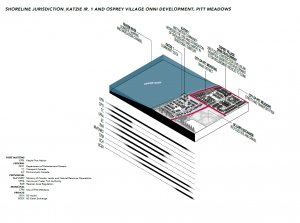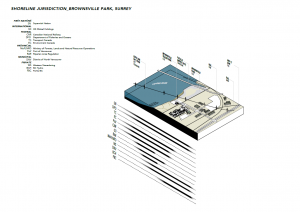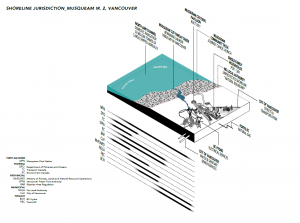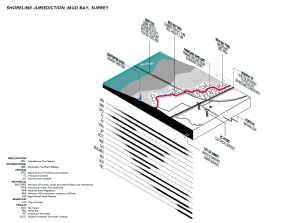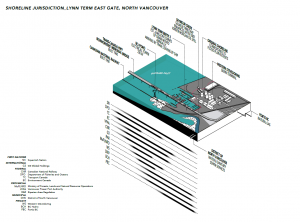SLR is placing both immediate and long‐term pressures on coastal communities to take protective measures. Due to the fact that the extents of climate change and SLR don’t respect political boundaries, coastal adaptation generally involves a wide range of actors, including private property owners, municipalities, asset owners, and provincial and federal agencies. Yet, most decisions regarding flood management in B.C. are made on a municipal level. As such, we are interested in illustrating the challenges local municipalities and First Nations in the region face with respect to navigating the complex landscape of regulation, zoning bylaws, permits, and overlapping jurisdictions.
One of the animations, for example, highlights the complexity of overlapping jurisdictions as it pertains the Musqueam Indian Reserve in Vancouver. Depending on where interventions are proposed, the Musqueam will have to engage a slew of local, provincial and federal bodies to get approval. This is not an extremely time-consuming process, especially if a municipality is trying to implement soft adaptation measures. In contrast to a dike or seawall, which can typically be constructed on private or municipally owned land, soft adaptation measures require the approval of many more permitting agencies.
